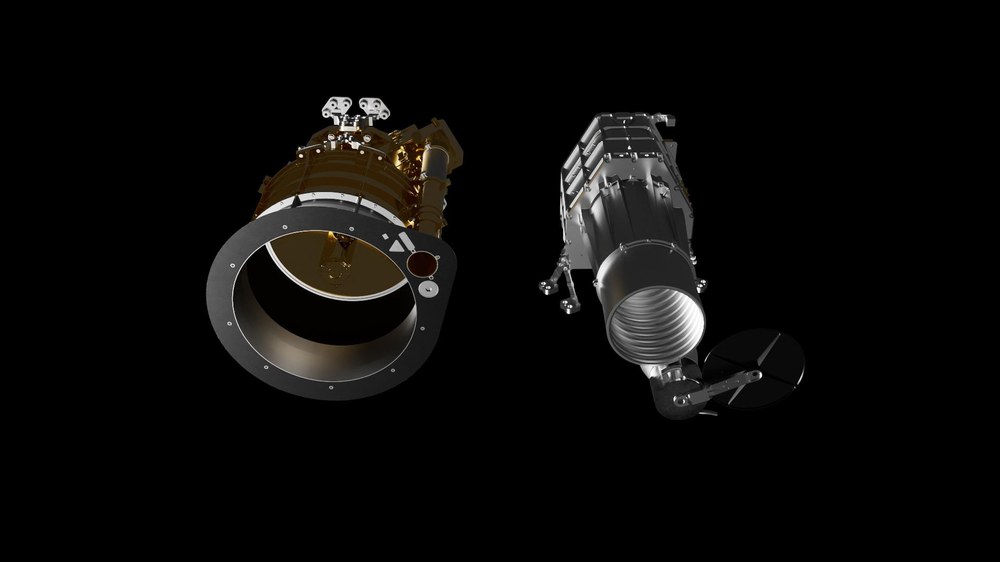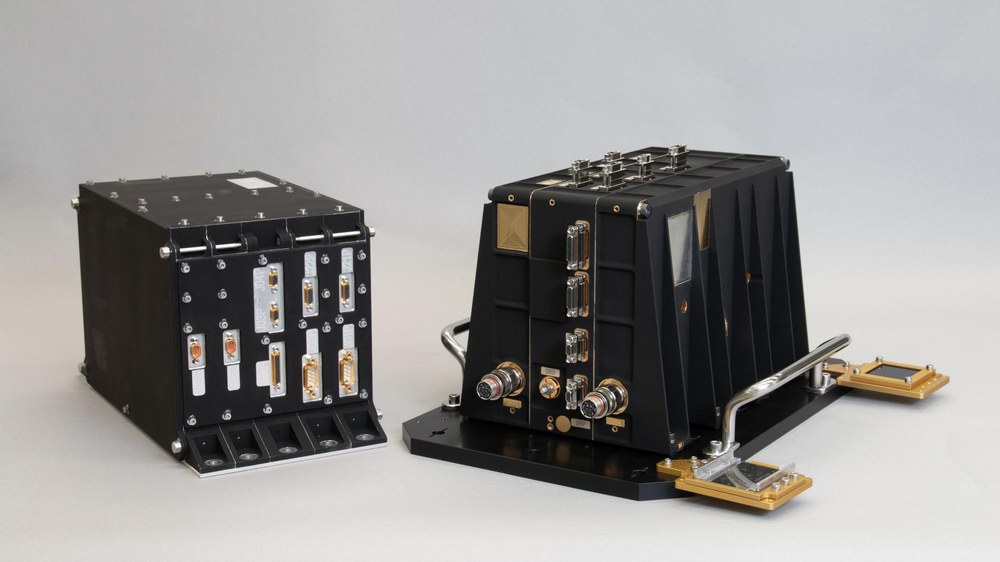The GALA altimeter



GALA is a 'laser altimeter' – an instrument that measures the heights and depths of a planetary landscape via the transit time of laser pulses. The GAnymede Laser Altimeter (GALA) for ESA's JUICE mission to Jupiter consists of two electronics units and an optical component containing the laser and the telescope for the receiver.
When conducting measurements, GALA sends short laser pulses down to the surface of the icy moon currently under investigation, Europa, Ganymede or Callisto. At the surface, the pulses are reflected and detected by the receiving telescope, which has a diameter of 25 centimetres, and sent to a highly sensitive detector called an avalanche photodiode. The analogue signal is digitalised at a high sampling rate and sent to the instrument's electrical unit, where it is analysed and passed on to the spacecraft’s data recorder.
GALA facts and figure | |
|---|---|
Mass | 25 kilograms |
Electrical power requirement | 50 watts |
Laser pulse duration | A few nanoseconds |
Time from transmission to reception of laser pulse | Typically a few milliseconds, which corresponds to a distance of 500 to 1500 kilometres between the surface and the receiving telescope |
Pulse frequency | 30 to 50 pulses per minute |
Sampling rate during digitization of the analogue signal | 200 megahertz |
GALA measures the light travel time between transmitted and received pulse with high precision: the distance travelled by the photons is measured to an accuracy of approximately ten centimetres. This corresponds to a temporal resolution of slightly less than a nanosecond. While JUICE is in orbit around Ganymede at an altitude of 500 kilometres in 2034/2035, several hundred million time-of-flight measurements will be made and used to produce the first accurate elevation model of Ganymede.
Surface texture and possible oceans in sight for GALA
However, these measurements require accurate knowledge of the spacecraft’s position and orientation, which can be determined to a high degree of accuracy from its motion away from or toward Earth and measured by examining radio communications. The temporal deformation of Ganymede's surface by Jupiter's tidal forces will also be determined. The measured heights of the tidal peaks in the ice crust, which occur periodically during Ganymede's orbit around Jupiter, will provide clues as to whether there is a liquid ocean beneath the outer ice layer. If the magnitude of this deformation is small, only around one metre, there is probably no ocean present. However, if the amplitude is several or even tens of metres, an ocean is likely, with increasing probability the larger the deformation.
In addition to time-of-flight measurements, GALA will analyse the width and shape of the reflected laser pulse in order to investigate the surface roughness of the moons on the scale of the pulse diameter (approximately 50 meters on the ground). The albedo of the surface – its reflectivity at the laser wavelength of 1064 nanometres – can also be determined from the relative intensity of the emitted and reflected pulses. Relationships between the surface roughness and reflectivity of geologic units with significant topography provide researchers with information on the geologic and tectonic processes that shaped Ganymede’s surface. The moon is characterised by unique structures due in large part to tectonic shifts, impact craters and basins as well as possible cryovolcanism.
GALA was developed through a cooperation between DLR, the Japanese space agency, JAXA, the University of Bern and the Spanish Instituto de Astrofísica De Andalucía – Consejo Superior de Investigaciones Científicas (IAA-CSIC) and the industrial partners Hensoldt Optronics (Germany), Meisei (Japan), Thales Alenia (Switzerland) and Sener (Spain).
ESA mission with strong German participation
JUICEi s ESA's largest and most comprehensive mission to explore the planets of the Solar System. In addition to ESA , NASA and the Japanese space agency JAXA have also contributed to the mission. ESA is providing funding for the satellite platform, the launch with an Ariane 5 ECA rocket and the operation of the spacecraft. The funding for the scientific payloads for JUICE is largely provided by national space agencies and the participating institutes themselves. In addition to the JANUS, SWI and GALA experiments, the German Space Agency at DLR is funding further German scientific contributions from the National Space Programme with the Particle Environment Package (PEP) particle spectrometer, the Jupiter Magnetometer (J-MAG), the Radar for Icy Moons Exploration (RIME) radar instrument and an instrument for radiosounding Jupiter's atmosphere (3GM).
